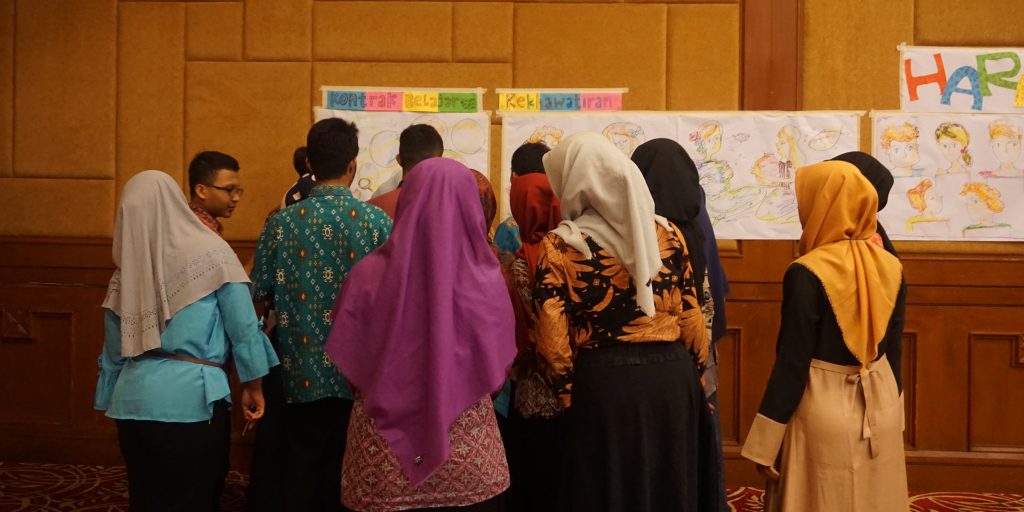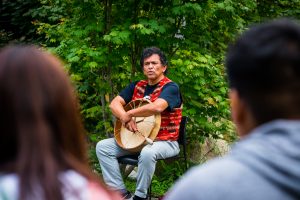
This section includes resources to help faculty, staff and counselors understand how to better support the needs of students in under-represented populations. This is vital work in which every institution should participate.
Please view the resource lists provided below for Black students, Asian-American students, Latinx students, and Native Students. Resources for LGBTQ+ students coming soon.
View an infographic created by Mental Health America with statistics on BIPOC (Black, Indigenous, People of Color) & LGBTQ+ and mental health.
View the 2020 BIPOC Mental Health Month toolkit also created by Mental Health America to find additional resources, handouts on racism and mental health and racial trauma, and calls to action.
The Steve Fund Crisis Response Task Force released recommendations to help institutions of higher education and employers mitigate the mental health risks for young people of color caused by the COVID-19 pandemic, economic crisis, and ongoing social movement against racism. These multiple converging crises are creating new problems for students of color and those entering the workforce, including abrupt campus closures, continuing uncertainty around the fall semester, loss of internships and job opportunities, and adjusting to remote learning and remote work. Download the report below.
View the Equity in Mental Health Framework which is a collaborative effort by The Steve Fund and JED.
This Framework provides colleges and universities with ten recommendations and implementation strategies to help inform and strengthen their mental health support and programs for students of color. The Equity in Mental Health Toolkit offers additional support in implementing the recommendations in the Equity in Mental Health Framework, including supporting campus-based efforts to reduce shame and prejudice around mental illness, increase responsiveness, improve campus climate, and provide system wide opportunities to help all students thrive. Our goal is to better equip schools across the country to prioritize this important work.
Beyond the Margins
Meeting the Needs of Underserved Students
“The 21st century college student population is the most diverse in our nation’s history, characterized by the intersection of race, gender, sexual orientation, religion, family composition, age, and economic status among others. The benefits of heterogeneous environments are many. Research shows that diversity can increase self-awareness, promote creative thinking, enhance social and cognitive development, and prepare students to navigate a diverse workforce.
As a pluralistic society, we are right to be inclusive of populations historically omitted from dominant discourse and media on diversity and equity. This blog series on underserved student populations brings together ACE staff and guest authors—administrators, scholars, practitioners and analysts—to look at deep-rooted issues that perpetuate division and inequity.” (American Council of Education)
Ring the Alarm: The Crisis of Black Youth Suicide in America
A Report to Congress from The Congressional Black Caucus Emergency Task Force on Black Youth Suicide and Mental Health.
Over the last several years, data has emerged indicating an alarming increase in the suicide rates for Black children and teenagers over the past generation. While research has also shown climbing rates for youth from other racial and ethnic groups, this trend in Black youth runs counter to historical data showing lower rates of suicide among Black Americans. It challenges the public perception that Black youth simply do not commit suicide.
Additional research about suicidal behaviors has raised questions about whether the path from suicidal thoughts to attempts is well understood in Black youth, and whether we have the knowledge and tools to intervene before the worst happens.
21-Day Racial Equity Habit Building Challenge©
Creating effective social justice habits, particularly those dealing with issues of power, privilege, supremacy and leadership is like any lifestyle change. Setting our intentions and adjusting what we spend our time doing is essential. It’s all about building new habits. Sometimes the hardest part is just getting started. The good news is, there’s an abundance of resources just waiting to empower you to be a more effective player in the quest for equity and justice. Please use this plan just as it is, or adapt it to a sector, an ethnic/racial group, or interest area.
View this excellent resource here to get started!
Young, Gifted, @ Risk and Resilient
A Video Toolkit to Support the Well-Being of Students of Color by The National Center for Institutional Diversity
This video series features scholars and practitioners from across the country who provide evidence-based information for faculty, staff, and providers to foster a positive learning environment and support the mental health and well-being of students of color.
Below are a few samples.
Ethel’s Club
A community designed for intention, healing, and creation. At Ethel’s Club, we see our members as unique individuals that deserve care, celebration, and healing. We believe that when we’re given the tools to thrive as individuals, we create new worlds when we come together as a community. We’re dedicated to providing those tools to encourage healing, inspiration, and communal care.
View their website here.
Additional Resources
Young Adult American-Born Muslims and Mental Health
This report was written by the Institute for Social Policy & Understanding. It includes recommendations for colleges to better support their Muslim students.
This 2014 SAMHSA report on building cultural competence is designed for prevention professionals, behavioral health clinicians, educators, and other healthcare and social service professionals.


 ‘Asian-American’ is perhaps the most confusing and least helpful of the commonly used aggregations of ethnicities.1,2 Twenty-four ethnic groups are included within this overall term, ranging from large populations of Chinese and Asian Indians (individuals of Indian and Pakistani descent), to far smaller numbers of Bhutanese and Maldivians. (U.S. Census)
‘Asian-American’ is perhaps the most confusing and least helpful of the commonly used aggregations of ethnicities.1,2 Twenty-four ethnic groups are included within this overall term, ranging from large populations of Chinese and Asian Indians (individuals of Indian and Pakistani descent), to far smaller numbers of Bhutanese and Maldivians. (U.S. Census)
